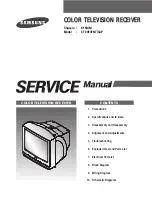
ķ
23
GB
Aerial
The car radio is designed for aerials with an
impedance of 75
Ω
to 150
Ω
. Extended aerial
cables, e.g. for aerials at the rear of the car,
may impair reception.
Figures
p
and
ü
– If necessary, use the aerial adapter (fig.
p
).
– Fix the aerial adapter (fig.
p
) or aerial cable
(fig.
ü
) in the plastic holder.
Additional connections
Blade contacts C: Figure
+
Connection for CD changer or AUX unit
C 13
CD bus control line. For AUX mode,
connect it with C15.
C 15
CD bus, earth.
C 16
+12 V supply voltage for CD changer.
C 17
Switching voltage for CD changer.
C 18
CD-audio earth or AUX-audio earth.
C 19
CD-audio left or AUX-audio left.
C 20
CD-audio right or AUX-audio rigth.
C
0
7
do not use, only for service.
C
0
8
do not use, only for service.
Line output
Connection for booster or active speaker.
C
1
1
Rear speaker, left +
C
1
2
Rear speaker, right +
C
1
3
Earth –
C
1
4
Front loudspeaker, left +
C
1
5
Front loudspeaker, right +
C
1
6
Switching voltage for booster on/off
(max. 0.3 A).
The entire current consumption of C17, C6
and A5 is not allowed to exceed 0.5 A.
Inserting the car radio
Figure
o
– Insert the car radio all the way into the
installed mounting frame
b.
The car radio should snap into place.
Removing the car radio
Figure
a
– Remove the control panel (page 4).
Insert both removal handles
d
as far as pos-
sible into the openings in the trim.
– Press both removal handles outward
ɫ
and slowly pull the radio out.
Fuse T 5 A
Figure
+
Blade-type fuse T 5 A / DIN 72 581– plugged.
Installation and Removal






































